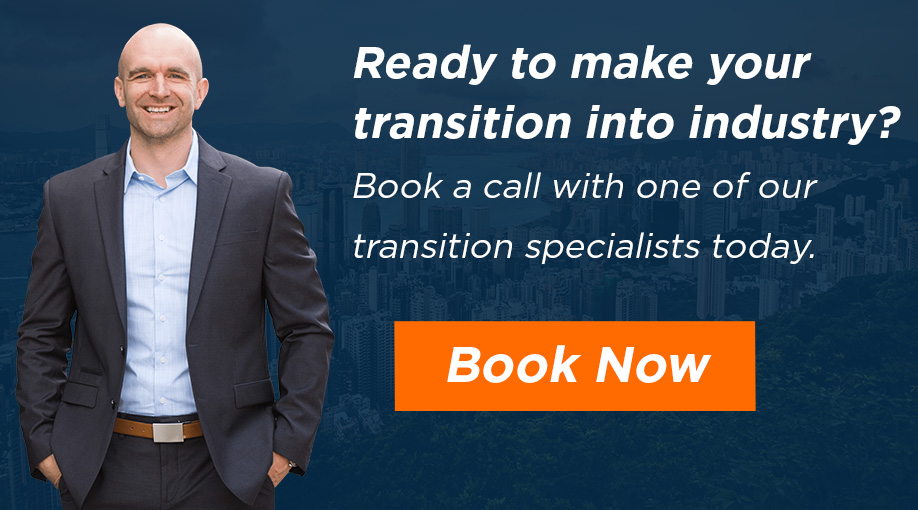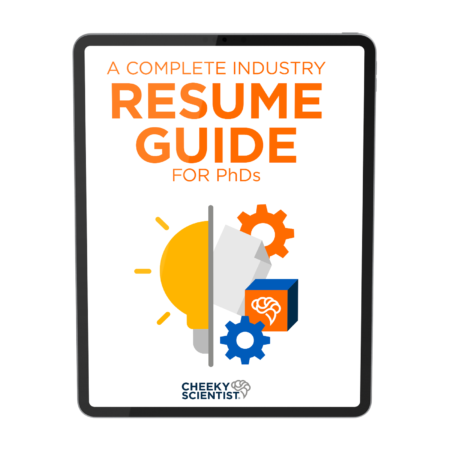7 Actionable Strategies To Build A Strong LinkedIn Network When You Are A PhD With No Industry Experience

Things in my job search started to really pick up once I started taking networking seriously.
I was attempting to network for a job in a location different from where I was currently living and this was a huge challenge.
Despite this, I persisted.
I began cold-contacting people over LinkedIn who were in my targeted industry and area.
This led to a small number of valuable connections over the following months, and I fostered these connections by initiating phone calls and regular contact via email.
How I actually landed my new position is an interesting story.
It was a friend/colleague of one of these initial contacts I made who connected me with what would be the phone screen for my current position.
A 2nd degree connection, if you will.
He was in the feasibility research field for conducting clinical trials, something that I had never even considered.
However, once I realized that this type of work involved exactly what I loved about science (summarizing medical research, medical writing, and giving scientific presentations), I was shocked to find out how well the position suited me.
He was able to refer me to a phone screen for a Feasibility Research Fellow position that focuses on oncology/medical device trials.
I proceeded through the interview process, which consisted of a phone screen, a writing assignment, an in-person interview/brief presentation, and was offered the job within 48 hours of the interview!
The main lessons I learned were that getting a job is about people and relationships, not resumes and LinkedIn profiles.
While these are important, forming relationships with PEOPLE is how to succeed in your transition.
Additionally, be open to new ideas and position types; you never know when you’ll stumble across something you’ll love.
Why LinkedIn Is Vital To A Successful Industry Job Search
LinkedIn is a huge professional networking platform and it is growing.
Hootsuite reported that 2 people join LinkedIn every second and LinkedIn currently has more than 590 million users.
This is an incredible resource for you to leverage.
If you are not using LinkedIn you are missing out on a huge resource.
Plus, Forbes reported that 45% of the people on LinkedIn are in upper management.
This is a place where you can connect with and learn from company leaders.
Within the vast network of LinkedIn you will be able to find people in the companies and positions that you are interested in.
You can set up informational interviews to learn about new companies and positions.
But it’s up to you to show these new connections that you are a valuable addition to their network.
Just creating a profile isn’t enough, you need to engage with the LinkedIn community.
7 Actionable Strategies You Can Use Expand Your LinkedIn Network
If you are serious about getting an industry job, then you need to get serious about networking.
You need to start using all the tools available to you to build up a great professional network.
And no matter where you are located LinkedIn is a great resource to begin networking.
Academia may have told you that LinkedIn isn’t important, but this is not true in industry.
Having a LinkedIn profile and connecting with other industry professionals will show employers that you are serious about your career outside the ivory tower.
Here are 7 LinkedIn networking strategies you can apply to your job right away…
1. Search and send personalized connection requests.
The easiest way to start expanding your LinkedIn network is to search for people you want in your network and send them a connection request.
To do this strategically, decide on a several target companies and start connecting with people who work there.
All you need to do is use the search for people function on LinkedIn and then choose a company to search.
This will bring up all the 1st, 2nd and 3rd connections that you have at these companies.
Once you have this list, start connecting!
But, always send a personalized note with your connection request.
This note that you send should not ask for anything and it should not be about you.
The note should be about the other person and give a quick note about why you want to connect with them.
When you are first starting to build up your LinkedIn network you should be sending several of these connection requests everyday.
Once you have built up your network, this is still something you should continue on a regular basis.
2. Update your profile correctly and completely.
LinkedIn uses an algorithm to decide what people appear in the search results and what items appear on people’s news feeds.
If your profile is incomplete LinkedIn will not rank your profile highly in these results and it will be difficult to expand your network.
So, the first thing you need to do before you start reaching out to new connections is to get your LinkedIn profile in order.
Write a future focused headline that includes keywords for the types of positions you are targeting.
Use a professional photo of your in business attire – not a lab coat.
Write a personalized summary that conveys your professional brand and also includes keywords for the types of positions you want.
Fill out every section of your profile and include links to media where appropriate, adding media will increase the time that people spend on your profile and that will increase the number of searches that you appear in.
When writing the descriptions for each section of your profile always maintain a results-oriented focus.
3. Join and participate in relevant LinkedIn groups.
There are tons of groups on LinkedIn.
Do a search and find a few groups that are active and that are relevant to your professional career goals.
Join these groups.
Start by joining just a couple groups and formulate a plan to get active within these groups.
Set a schedule for yourself and commit to participating in these groups for a certain amount of time every week.
When you are in the group add value by giving insightful comments on other people’s posts, don’t just say “great post!”.
You are a PhD, you are much more insightful than that.
Truly engage with the group and with the posts people make.
Additionally you should be posting your own updates into the group.
Once you have an idea of the types of content that is posted in the group do you research and find articles etc that you think others in the group would find valuable and post them.
4. Connect with fellow alumni.
You can use the advanced search feature on LinkedIn to search for people at a specific university.
You just need to click on the search bar and then choose the All Filters option, from there you can enter the university that you would like to search.
This will then display all the 1st, 2nd and 3rd connections that you have to people at that university.
Be sure that you search for people at all the universities you have attended or worked at.
As a PhD or postdoc it’s very likely that at some time or another you have been associated with more than one university.
Leverage this to your advantage and reach out to alumni from all these universities.
When connecting with fellow alumni, be sure to mention this in the connection request that you send them.
People are much more likely to accept your request if they feel that sense of connection with you by knowing that you went to the same university.
5. Comment on other people’s posts.
This can be a little bit intimidating at first.
You might be worried about saying something wrong or think it’s weird to comment on the post of someone you don’t know that well…
But this is what LinkedIn is for!
It’s a platform to connect with and communicate with new professional connections.
Don’t let your fear keep you from engaging in conversations.
Set a goal and schedule for yourself to regularly comment on the LinkedIn posts that others make.
This will add value to the contacts that you already have and when you comment on someone’s posts all the people that they are connected to will be able to see the comment.
That means that if they think you wrote something interesting they might head over to your profile and connect with you.
Commenting on other people’s posts is a great way to increase your visibility and show that you are involved in your professional community.
Also, by commenting on others posts you increase the likelihood that they will comment on your posts which will increase your visibility on LinkedIn even further.
6. Regularly write your own posts on LinkedIn using appropriate hashtags.

You have to do more than just have a profile on LinkedIn if you really want to benefit from the platform.
You need to participate.
You need to post updates.
When making these updates they will be shown to people who are in your network, so when you are first starting this can be a small number of people.
A great way to increase the visibility of your updates is to include relevant hashtags.
On LinkedIn people can follow hashtags, similar to how you can follow people on LinkedIn.
So, if your post contains a hashtag that someone follows, your update will appear in their newsfeed, even if you are not connected.
This is a great way to extend your reach and potentially interact with new connections.
It takes some discipline to consistently post updates on LinkedIn.
So set clear goals for yourself and create a plan to make it happen.
The rewards for becoming more involved on LinkedIn can be huge, but you have to put in the work.
7. Don’t get discouraged when people don’t respond.
Not everyone is going to accept your connection request.
Not everyone is going to respond to your messages.
Not all your updates will get likes and comments.
This is normal.
Don’t let this lack of response discourage you from continuing to reach out to new people and expand your network.
Increase your threshold if you are not getting any responses.
Maybe you need to reach out to 10 new people every week, or maybe 100 people in order to get the results you want.
Don’t take someone not responding to you personally.
The best way to connect with someone is to just stay positive and continue to add value to them even if they don’t respond to your messages.
Even if you are starting your LinkedIn profile from ground zero with no connections you can turn your LinkedIn profile into a great job search tool. Start expanding your networking today by following these steps, search and send personalized connection requests, update your profile correctly, join and participate in relevant LinkedIn groups, connect with fellow alumni, comment on other people’s posts, regularly write your own posts on LinkedIn using appropriate hashtags, don’t get discouraged when people don’t respond. LinkedIn is an incredibly powerful tool that you should be utilizing in your job search.
If you’re ready to start your transition into industry, you can apply to book a free Transition Call with our founder Isaiah Hankel, PhD or one of our Transition Specialists. Apply to book a Transition Call here.

ABOUT MICHAEL PACE, PHD
Michael Pace, PhD, is a professional life scientist with 5+ years of clinically--and translationally--oriented research experience in neurodegenerative disorders, a broad biomedical knowledge base, and a passion for effective scientific communication and discovery.
More Written by Michael Pace, PhD































